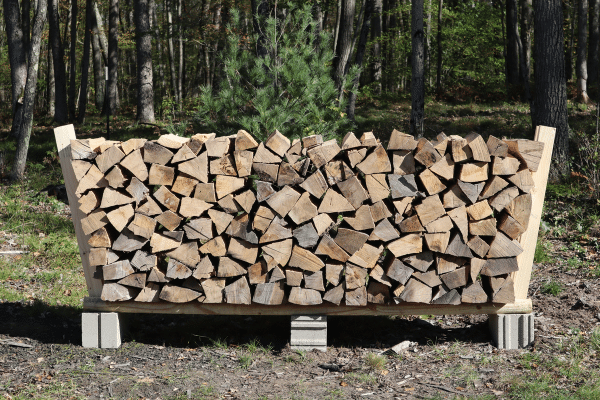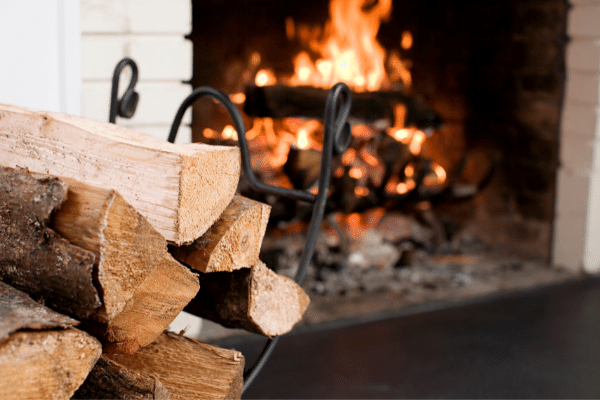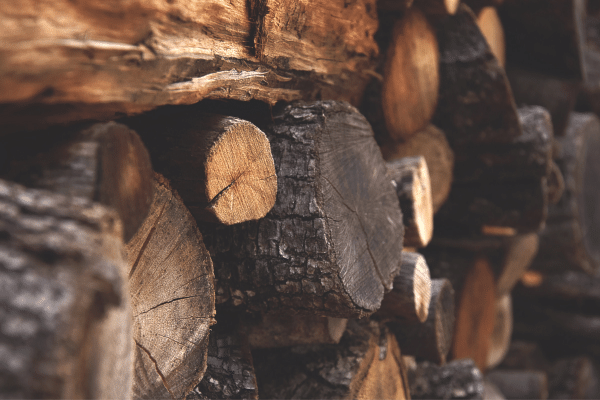- Home
- Storing Firewood
- Is Walnut Good Firewood
Is Walnut Good Firewood
This post may contain affiliate links so I earn a commission.
Is walnut good firewood to burn this winter or are there better options to choose from?
With the rising costs of fossil fuels to heat homes, many people are going back to the old fashioned heat - and that is firewood.
But how do you find the right kind of firewood?
Depending on your location, walnut might be the best species of firewood for you.
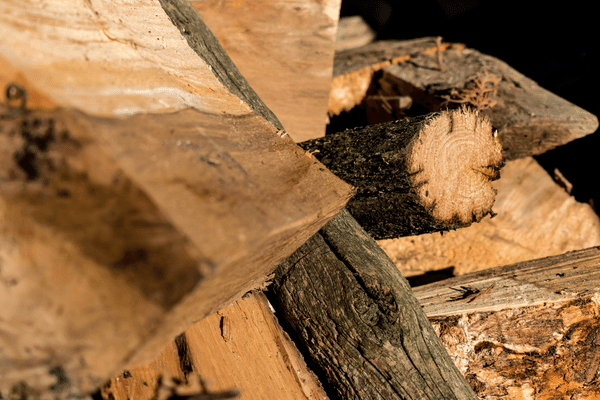
It is relatively easy to split and one of the lighter hardwoods to handle.
Read on to find out all you need to know about using walnut for firewood.
Is Walnut Good Firewood - Species Overview
Walnut trees are listed in the plant genus Juglans, known as Juglandaceae.
Most walnut trees are classified as either English walnut, originating in Iran, or black walnut, originating in the United States.
Black walnut (Juglans nigra) and English walnut (Juglans regia) grow in many parts of the US and also Southern Canada.
Major commercial orchards of walnuts are primarily located in California but can also be found in Illinois, Minnesota, Indiana, Missouri and Iowa.
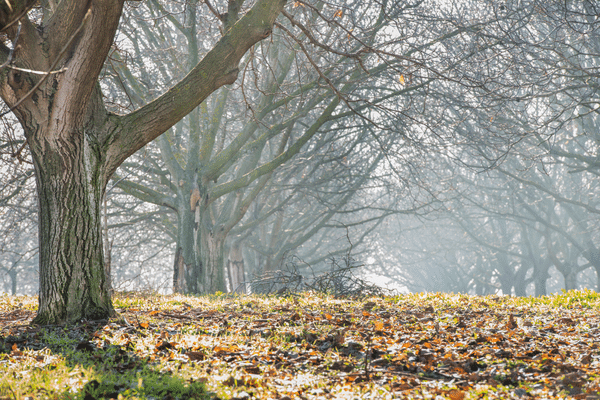
Walnut is a very beneficial tree in many ways.
The nuts are an excellent food source not only for people but also for wildlife, especially squirrels.
Black walnut is an extremely valuable lumber that is used in the manufacture of higher value products.
Walnut is a darker, beautifully grained hardwood.
In addition to walnut’s other benefits, as described above, it is a high-quality firewood that is known for its medium density and clean burning traits.
How To Identify A Walnut Tree
Walnut is a relatively fast grower with black walnut sometimes reaching heights of 80-125 feet and English walnut reaching heights of 80 feet.
Diameters of walnut trees can reach as high as 30-40 inches.
Because it is intolerant to drought, walnut trees will develop a canopy often up to 100 feet in width, making it a desirable shade tree.
Walnut trees can be detrimental to many plants.
They are toxic to potatoes, alfalfa, blueberries, apples, and others with their allelopathic properties.
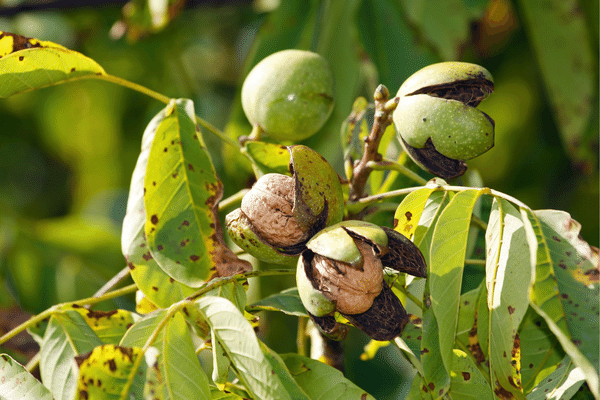
Because of this, you must take great care when choosing a planting location for walnut trees.
The most prominent features to help identify walnut are the leaves.
They are long, compound leaves 12-24 inches in length with 5-23 short-stalked leaflets in lengths of 2-5 inches.
Walnut bark is typically gray to dark brown and quite coarse with seemingly vertical ridges.
English and black walnut are deciduous hardwoods, dropping their leaves each fall season.
They are capable of producing nuts each year, but often walnut seems to cycle in high and low yield years.
Nuts, like the leaves, also drop in the fall.
Eleven species of walnut trees can be found in North America, including:
- Andean Walnut
- Black Walnut
- English Walnut
- Manchurian Walnut
- Little Walnut
- Arizona Black Walnut
- Brazilian Walnut
- Northern California Walnut
- California Walnut
- Butternut
- Japanese Walnut
Two of the most notable species familiar to many of us in the US are black walnut and English walnut.
These are known for the valuable lumber they produce and also the edible nuts.
Seasoning Walnut Firewood
Walnut firewood can take 6-24 months to season depending on moisture content, when it was cut and split, and also the location of the tree.
Winter cut firewood is almost always much lower moisture content than summer cut, as much of the water or sap retreats back to the roots in fall.
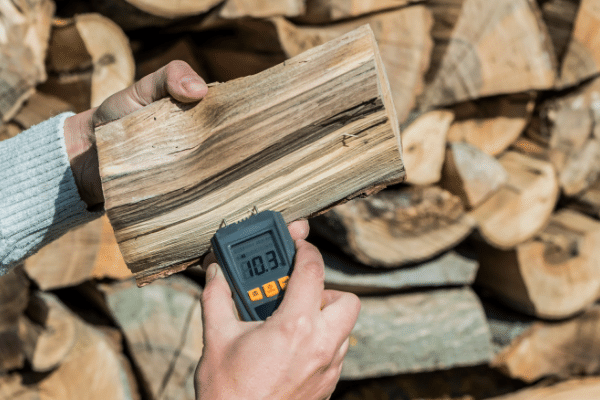
The best way to determine dryness of any firewood is with a moisture meter.
Drive the probes into the chunk of wood and if the reading is 20% or less, the wood is at a suitable moisture content for burning.
Most people may not have a meter to measure dryness so look at the color of the wood.
Dry wood will be darker in color and will also show signs of splitting and checking, especially on end grain.
Walnut firewood, when dry, also loses its bark and becomes much lighter in weight than green, unseasoned wood.
Walnut Firewood - Drying, Splitting And Sap Production
Seldom will there be any visible sap coming from a walnut tree other than from a wound, such as a limb broken from the trunk.
This sap that bleeds from the injury is rarely a cause for concern and will heal itself over time.
Walnut sap is a very sweet substance that can be processed much like maple sap into a syrup.
Many people feel the syrup from walnut is even sweeter than maple.
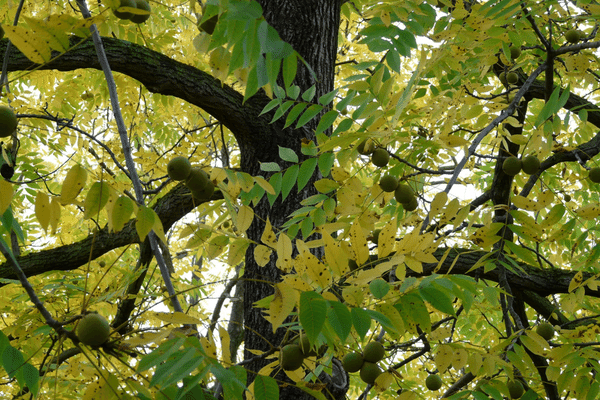
Even though the leaves and roots of the walnut are toxic, as they contain a chemical known as juglone, the sap, prejuglone, is non-toxic and completely safe as a syrup.
Walnut firewood produces only minimal smoke that has a pleasant aroma as it burns.
As with any burning woods, walnut will produce creosote.
Burning well-seasoned walnut firewood reduces the amount considerably.
Is walnut good firewood to split?
Walnut is considered to be a fairly easy splitting wood.
Black walnut is classified as relatively easy and English walnut is more within a moderate range of difficulty.
The dryness of the firewood is another factor in determining ease of splitting as the greener the walnut is, the more difficult it is to split.
Is Walnut Firewood Good For Heating Your Home?
Walnut can generate 20-20.2 million BTUs per cord of firewood, which is 128 cubic feet of firewood, or as some say a full cord.
Walnut is considered a medium density wood so it doesn't have the output of dense woods such as oak or maple with BTU values getting near 26-28 million BTUs.
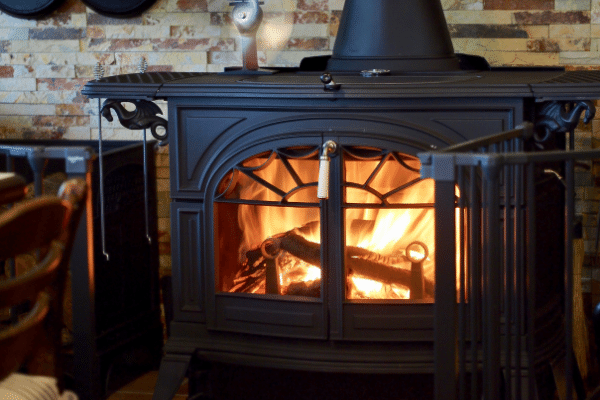
Is walnut good firewood to burn in a fire pit?
Walnut emits a very pleasing, almost sweet aroma as it burns making a pleasant wood to burn in an outdoor fire pit or indoor fireplace.
Other Uses For Walnut Trees
Walnut trees, although very beneficial as firewood, have many other outstanding uses.
Black walnut is considered a commercially high-valued lumber when milled.
It often will bring from $5 to $8 dollars per board foot and sometimes much more depending upon circumstances.
Lumber milled from walnut is most widely used in high-value furniture.
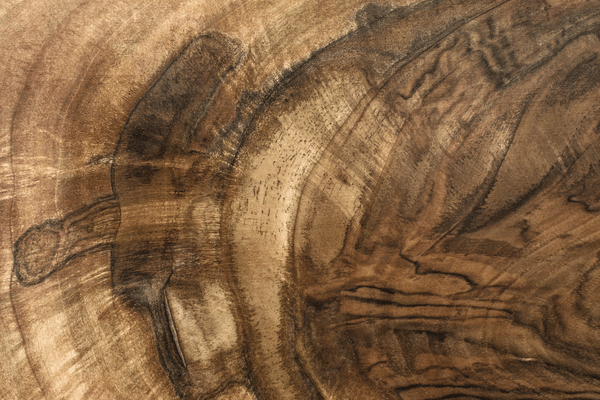
Nuts from the black and English walnut are commercially sold products that are used widely in cooking, salads and eating them as we would any other nut.
Walnut oil is another edible from the walnut tree with benefits to the skin.
It is used in cooking and, from a medical standpoint, is an excellent source of antioxidants.
Buying Walnut Firewood
Searching locally in your area for firewood vendors would be possibly the first and best option to obtain walnut firewood.
Depending on location, walnut firewood is easy to find at various markets and home improvement stores.
As you can see, walnut is a great firewood choice and it would be a welcome addition in your wood shed or firewood rack.
